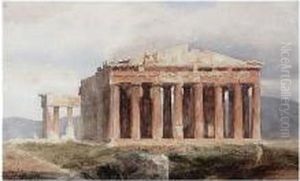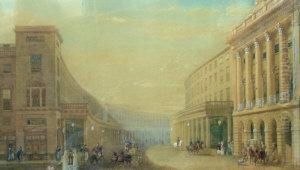James Pennethorne Paintings
James Pennethorne was a prominent British architect and planner during the 19th century, born on June 4, 1801, in Putney, London. The son of a draftsman, Thomas Pennethorne, who worked for John Nash, a leading architect of the time, James was well-placed to enter the field of architecture. After his schooling, he continued his education under the tutelage of his father's employer, becoming one of Nash's pupils and subsequently a trusted assistant. Nash's influence was pivotal in Pennethorne's formative years as an architect, and this connection helped him establish his own reputation later on.
Pennethorne embarked on a Grand Tour of Europe, a rite of passage for many architects of his era, which allowed him to study classical and Renaissance architecture first-hand. This experience was instrumental in his architectural education and would influence his later works. Returning to England, he worked for the Commissioners of Woods and Forests, a government body responsible for managing Crown lands. This position led him to be involved in various public works and urban planning projects, including the layout of parks, such as Victoria Park, and the design of government buildings.
Throughout his career, Pennethorne became known for his sophisticated blend of classical and Renaissance styles. He was involved in the design and construction of several notable buildings, including the New Government Offices (now part of the Foreign and Commonwealth Office) in Whitehall, which was his most significant commission. His works were characterized by their grandeur, clear lines, and functional elegance.
Aside from individual buildings, Pennethorne's legacy also includes his contributions to urban planning in London. He devised comprehensive plans for the development of areas such as the Victoria Embankment and Battersea Park. His designs often featured wide avenues, garden squares, and a hierarchical arrangement of streets, indicating an awareness of traffic circulation and urban aesthetics that was ahead of his time.
James Pennethorne died on September 1, 1871, in London. His contributions to architecture and urban planning during the Victorian era had a lasting impact on the landscape of London, and his work is still appreciated by architects, historians, and the public alike. While not as widely celebrated as some of his contemporaries, Pennethorne's role in shaping the infrastructure and appearance of modern London is a significant part of his professional legacy.

